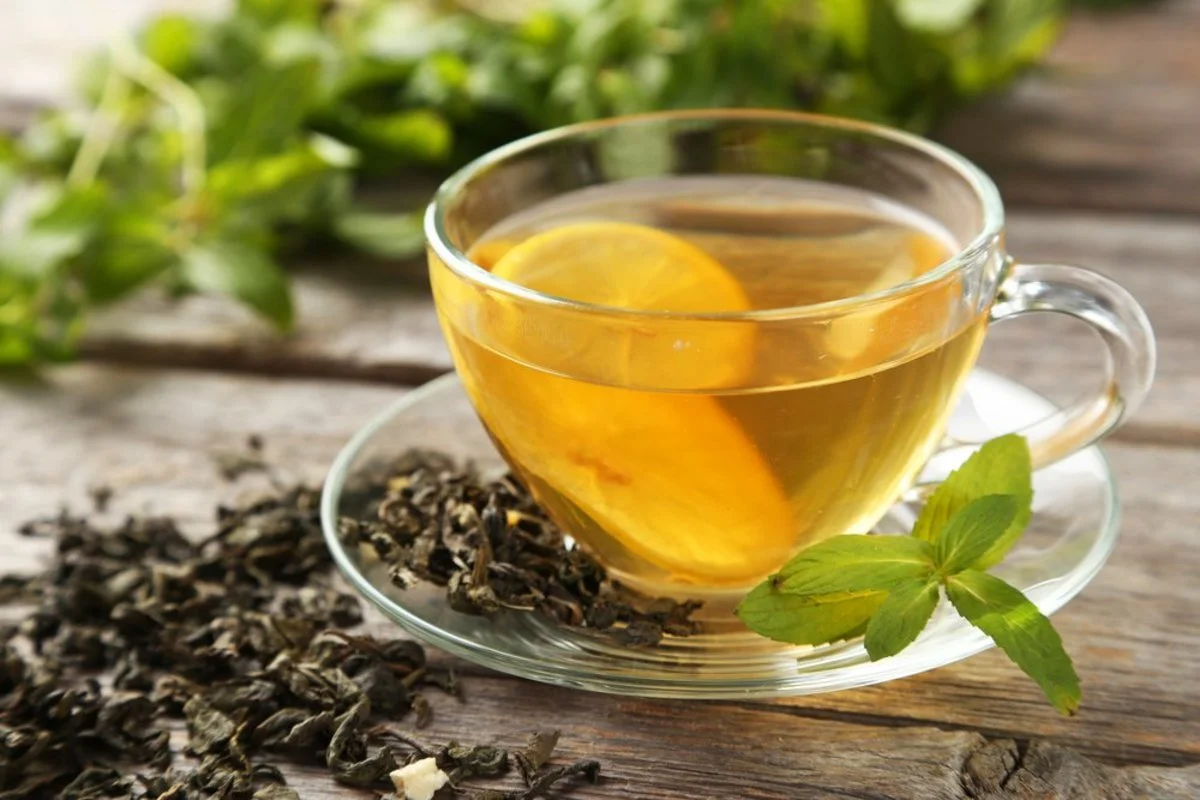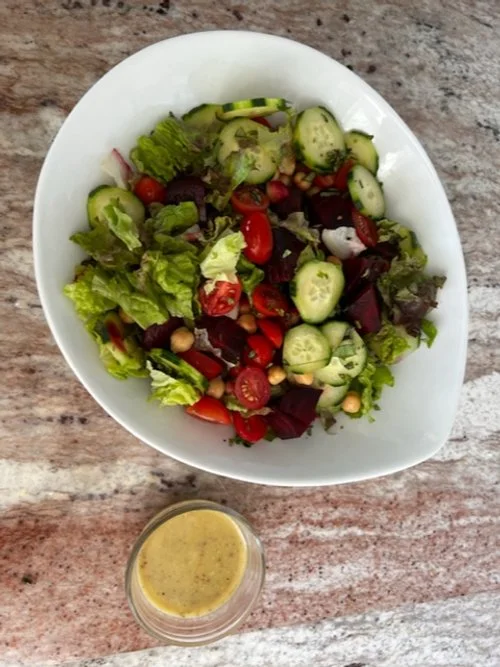Why all the hype about the green and white tea? Potency. Green tea is produced from the fresh leaves of Camellia sinensis by steaming or drying without fermenting. Categorizing tea as “black,” “oolong,” “green,” or “white” depends on the amount of processing the leaves undergo. White tea is the least processed, followed by green. The minimal processing results in a higher concentration or protective polyphenols - antioxidants that prevent DNA damage. Polyphenols, mainly composed of catechins, are the main functional extracts from green tea, and the major green tea polyphenol is epigallocatechin-3-gallate (EGCG) accounting for more than 50% of total polyphenols. Tea polyphenols, specifically catechins and EGCG, are crucial in promoting health. Green tea and EGCG can be promising candidates for the prevention and management of cancer, obesity, diabetes, cardiovascular diseases, neural diseases, and liver diseases, owing to its potent antioxidant, anti-inflammatory, and anti-fibrogenic properties. Research has found that green tea supplementation improves total antioxidant capacity.
Optimal Immune Support
It’s that time of year for extra immune support. Or, has ‘that time of year for immune health’ now become every day of the year? Colds, flus, COVID-19, I certainly hope to avoid it all.
Nutritional status and immune function are strongly intertwined with one another. Supporting the gut microbiome is essential as our digestive health is responsible for a solid 60%, if not more, of our immune function. To support your microbiome, consume dietary sources of polyphenols, prebiotics, and probiotics.
Polyphenols – green tea, pomegranate, berries, cacao powder
Prebiotics – berries, jicama, mushrooms, leeks, onions, garlic, flax seed, seaweed
Probiotics – sauerkraut, kim chi, tempeh, coconut kefir, kombucha, miso
Healthy Holiday Treats
Melatonin – how may it be useful?
Primarily synthesized in the pineal gland, melatonin is a hormone produced and released in relation to the circadian rhythm. To a lesser extent, melatonin is also synthesized in the heart, liver, placenta, skin, kidney, gut, and more. Melatonin secretion from the pineal gland decreases as we age.
Melatonin is involved with the promotion of sleep, timing of other circadian functions, immune regulation, and modulation of pituitary and adrenal hormones. The release of melatonin is regulated by light exposure. Melatonin concentrations rise as light fades prior to darkness, peak during darkness, and fall when exposed to light to promote wakefulness. Evening artificial light can have the same effect as sunlight, which explains how it can disrupt the rhythmic release of melatonin.
Thanksgiving Recipes - Healthy & Delicious!
It's hard to believe that 2022 is winding down. As Thanksgiving approaches, I hope that you're all able to celebrate the harvest and other blessings this past year. With a full heart and grateful spirit, I would like to share some healthful recipes with all of you that I hope you enjoy. I enjoyed making these recipes and sharing with my family.
Omega-3 Fatty Acids - can they help your heart, brain, joints, & more?
Omega-3 fatty acids have been shown to influence a wide range of chronic diseases through their ability to direct eicosanoid metabolism towards anti-inflammatory pathways. Omega-3 fats include long chain omega-3 fats such as eicosapentaenoic acid (EPA) and docosahexaenoic acid (DHA), commonly found in fish, and α-linolenic acid (ALA) found in some plant oils.
Pumpkin this, Pumpkin that…Healthier Sweet Options
It’s pumpkin spice season with Halloween around the corner. You may be thinking fall colors, leaves changing, crisp air, and/or ‘sweets’. Arguably, it’s the onslaught of sugar consumption for the remainder of the year. Don’t get me wrong, I love pumpkin, but not surprisingly, the pumpkin-spiced food and beverage products are generally laden with sugar. A Starbucks grande pumpkin spiced latté, for example, contains 50 grams of sugar; that’s 12 ½ teaspoons of sugar in one beverage! Or, go for Dunkin’ Donuts Pumpkin Swirl Frozen Coffee and you’ll consume 99 grams of sugar, nearly 25 teaspoons of sugar – that’s not a typo, unfortunately. How much sugar should we be aiming for? The American Heart Association recommends no more than 24 grams or 6 teaspoons daily for women and for men to limit to 36 grams or 9 teaspoons daily. You could, of course, opt to have less added sugars or even none whatsoever.
Coffee - Is it protecting us or killing us?
Depending on what you’re reading, you may think both. And you would be right. Research is all over the map. When I read that International Coffee Day was October 1, 2022, my first thought was, ‘Do I dare? Do I go there and tackle coffee?’. Because, let’s be honest, for some of you, messing with your coffee I know puts me in a dangerous category, I can already feel some questionable glares coming my way. However, you all know me enough to know that I dug into the research on various coffee-related topics and I hope to present in an objective, non-opinionated manner. I highly value your health & your quality of life – I’m on your team.
Trader Joe's - Some of my favorites!
The Synergy of Foods & Nutrients
Could 1+1 = more than 2? In the case of plant foods, yes!
Which fruit has the greatest antioxidant activity?
We know that apples, oranges, grapes, and blueberries are good for us. So, which one is the best? The combination of them all has the greatest antioxidant effect. Regular consumption of fruits and vegetables have consistently been associated with a reduced risk of various chronic diseases, including cancer and cardiovascular disease. This benefit is largely from the synergy of various protective phytochemicals that are obtained from a variety of plant foods, or in this case, fruits. Only eating blueberries and the isolated phytochemicals in blueberries, though they’re great, will not confer the benefits of eating a mixture of fruits to garner an even greater compilation of phytochemicals. This is also why whole foods ‘win’ over isolated phytochemical supplements.
Mangos - Nutritious & Delicious!
Who doesn’t love a good mango? They’re nature’s candy.
On a recent work trip to Maui, I was reading a journal article about mangos helping wrinkles. I was aware of other health benefits, but wrinkles was news to me. Naturally, mangos were plentiful at the local markets, so I thought it's time to highlight mangos for all of you.
While mangos contain over 20 different vitamins and minerals, they are rich in carotenoids, especially beta-carotene, and vitamin C. Ataulfo mangos, in particular, are four times richer in beta carotene than your typical mango. Note that the more yellow mangos contain a higher carotenoid content whereas the red types provide a greater source of anthocyanin content. Color, as you may know, is a key indicator of phytochemical content. Additionally, mangos are the primary source of the polyphenol mangiferin and also contain other essential bioactive compounds, including quercetin, catechins (i.e., gallic acid), and kaempferol.
Favorite foods from Costco
It goes without saying that my top favorites at Costco, and all markets for that matter, will be the fresh, organic produce. Frozen too as long as it doesn’t contain added sugars, oils, and chemicals. Costco also has great, organic protein sources, both plant- and animal-based – beans, tofu, chicken, turkey, and wild-caught fish.
What about other products? Well, here are a handful of favorites. Do you have favorites? Please message me, I'd love to hear from you!
Lemon Balm
Lemon balm is a European herb from the mint family with a mild lemon scent and aroma. Its scientific name, “Melissa Officinalis”, means honeybee in Greek, as it is known to attracts bees.
This herb can be used to add flavor to your dishes, as well as used therapeutically to alleviate various health conditions. The fresh leaves are most often used to make teas, but can also make great smoothies, pestos, and marinades, and can also be incorporated into jams and baked goods (see below for fun recipes!). In addition to the popular lemon balm tea, it can be used in tinctures, essential or infused oils, perfumes, creams, soaps, lip balms and much more.
Plant-Based Diet & the Microbiome
By now, you have probably heard that adopting a plant-based diet could possibly prevent or inhibit the progress of certain diseases. What is considered a plant-based diet? Simply put, it is a dietary pattern which consists of predominantly whole plant foods (vegetables, fruits, whole grains, legumes, nuts and seeds) with the inclusion of low amounts of animal foods, but could also consist of exclusively plant foods. While there are many reasons why eating a majority of plant foods would be beneficial for health, one of them is the favorable changes to our gut microbiome.
Seaweeds & their Health Benefits
Cancer Survivorship - is it really that simple?
Good news - cancer mortality rates continue to decrease, and cancer survivors are living longer than ever before. That said, we have much more work to do. It is estimated that there will be ~1.9 million new cancer cases diagnosed in 2022.
I would like to give a special shout-out to all of the cancer survivors out there! Well deserved, you have a day designated to Cancer Survivorship – June 5, 2022. The NCSD Foundation states that, “National Cancer Survivors Day is a celebration for those who have survived, an inspiration for those recently diagnosed, a gathering of support for families, and an outreach to the community.”
May is National Salad Month - Enjoy these recipes!
There is no better time to focus on salad combinations than now as we head into the warm, summer months. In the Ayurvedic practice of Ritucharya, or the practice of seasonal eating, Grishma is the season of summer from mid-May to mid-July and emphasizes sweet, light, cold, and mineral-rich foods. With summer adding the element of dryness, you want to stay hydrated and consume plenty of plant-based antioxidants. Foods recommended during Grishma include asparagus, celery, cucumber, and leafy greens, seasonal favorites.
While a traditional salad is defined as a mixture of raw or cooked vegetables typically seasoned with oil, vinegar, or other dressing, there are a multitude of options and ingredients that can be combined to create a well-rounded nutritious and delicious salad. The most important components to any good salad are the base, the primary ingredients, the protein, the dressing, and any additional tasty toppings. Let’s discuss each one in detail.
Not all carbs are equal!
While a lot of research studies focus on the possible effects of carbohydrates (carbs) within various dietary patterns, such as low-carb versus low-fat, the types of carbs may be more critical. Indeed, there is a big difference between complex, whole and unprocessed carbs and simple carbs, oftentimes associated with processed or refined grains.
Spring Recipes - Fast, Fresh, & Delish!
Asparagus Mushroom Risotto
This is a delicious, grain-free and dairy-free risotto. I’ve received a thumbs up from several family members – and it’s virtually ALL vegetables. I use more liberal portions of the asparagus and mushrooms – you could use more or less than the recipe calls for; create to your desire. And since you’re not cooking rice, this recipe cooks much more quickly than traditional risotto recipes, so it’s a great option even if you’re tight on time.
Hormones – How balance is so critical
You might wonder why are hormones so important? The truth is hormones regulate many aspects of our health - including stress response, metabolism, reproduction, menopause and more - and if they’re dysregulated, hormones can lead to feeling sluggish, weight gain, poor sleep, brain fog, depression, low libido, and increased risk for certain conditions or diseases.




















